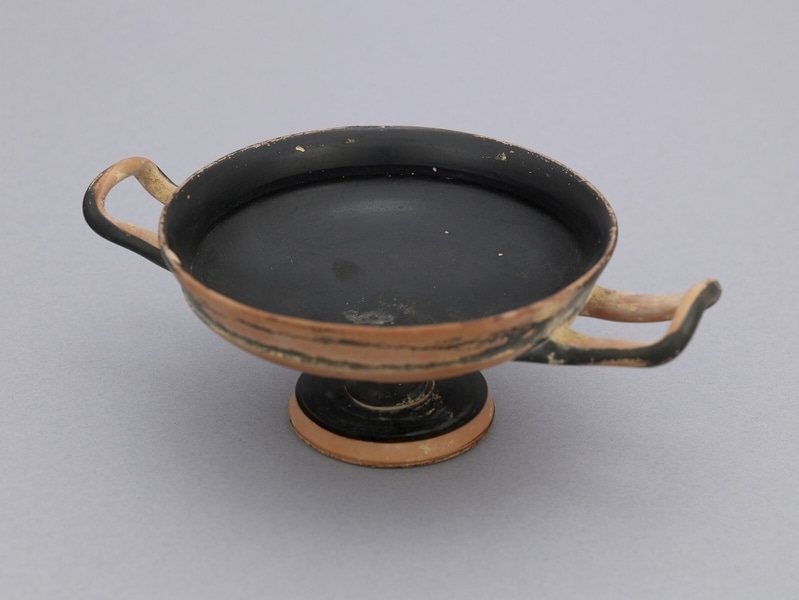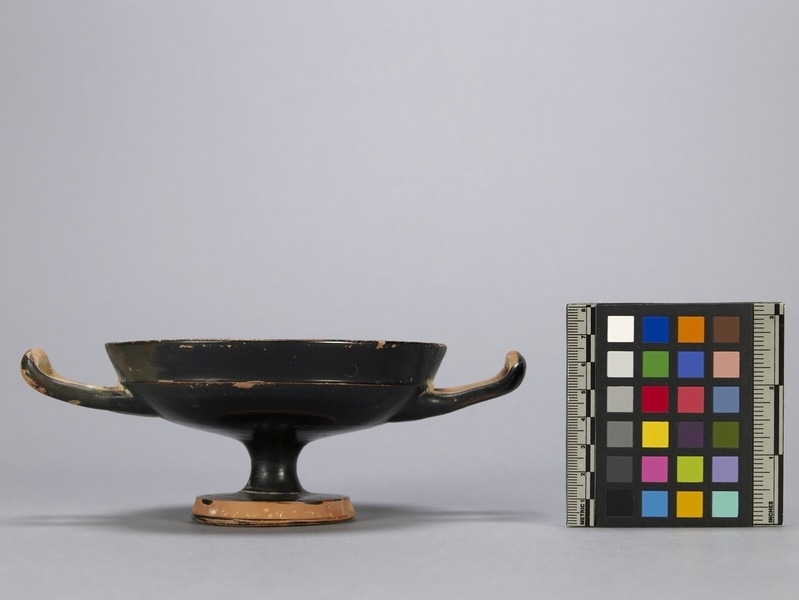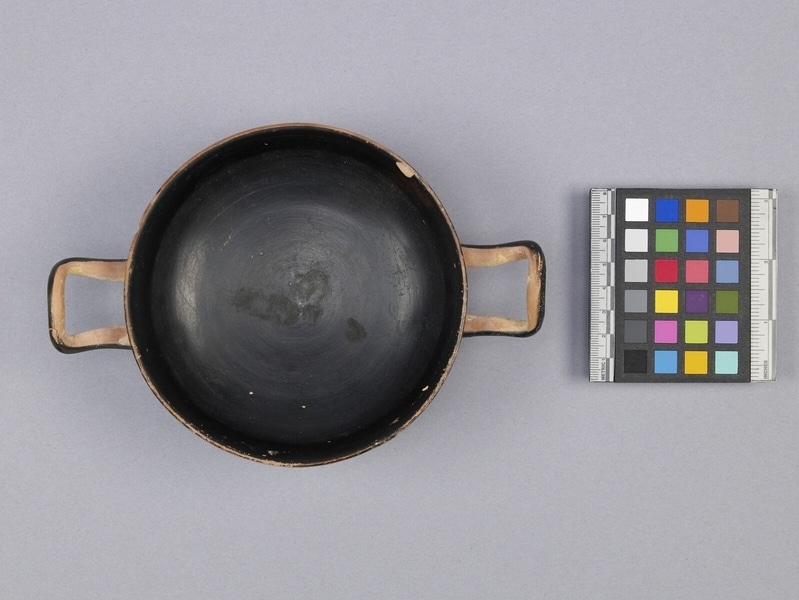Cup Item Number: Ce230 from the MOA: University of British Columbia




Description
Clay cup consisting of a wide, shallow bowl, lip area separated from bowl with fillet, tall cylindrical stem connects bowl and foot with gentle curves. Foot consists of a heavy disk with slightly oblique edges. Two ring handles, round in section, spring from bowl just below fillet, almost horizontally but with slight upward curve upswept at their ends. Decoration consists of black paint applied to most of surface with areas left in reserve. Handles painted only on outside edges and reserve areas left between their junctions with body. Reserve band on side of foot.
History Of Use
The kylix was a two handled cup with shallow bowl and generally with a high foot used for drinking wine. These cups were produced for general use but also served a funerary function as grave goods.
Cultural Context
utilitarian; funerary
Iconographic Meaning
The word kavos or kalos inscribed on the foot was a common graffito meaning "he/it is beautiful." The term usually followed a person's name giving praise to some figure of the day, but it was not uncommon to use the term "kalos'' on its own.
Narrative
This collection was said to have been acquired by James George during his service in Greece (Athens) from 1945-48.
Item History
- Made in Athens, Greece during 551 BCE
- Owned by James George before November 28, 1985
- Received from James George (Donor) on November 28, 1985
What
Who
- Culture
- Greek
- Previous Owner
- James George
- Received from
- James George (Donor)
Where
- Holding Institution
- MOA: University of British Columbia
- Made in
- Athens, Greece
When
- Creation Date
- during 551 BCE
- Ownership Date
- before November 28, 1985
- Acquisition Date
- on November 28, 1985
Other
- Item Classes
- ceramics
- Condition
- good
- Current Location
- Case 96
- Accession Number
- 1066/0009